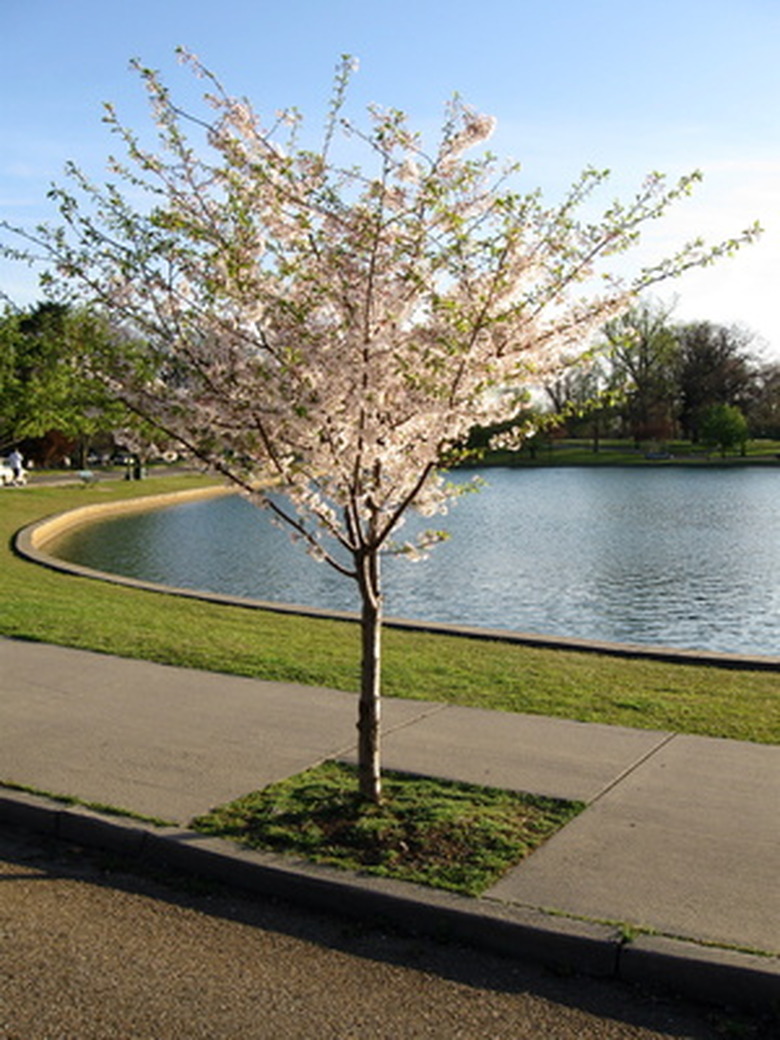What Is The Rate Of Growth For Dogwood Trees?
Flowering dogwood is a widely planted landscape tree. Known for its bright, fragrant blossoms, it grows in areas all over the country, but especially in the South, where it is one of the most popular spring flowering trees. A number of cultivars (short for 'cultivated varieties') of flowering dogwood are available for landscape uses, and the growth rate depends on which one you choose.
Growth Rate
Dogwood trees have a slow to moderate growth rate, generally growing at a rate of about 20 feet in 25 years according to Clemson University. The specific growth rate varies by cultivar.
Varieties
Slow-growing cultivars of flowering dogwood include Cherokee Princess, Barton's White, First Lady, Mystery and Purple Glory. If you are looking for a dogwood tree with a moderate growth rate, consider Cherokee Chief, Cherokee Daybreak and Cherokee Sunset. The Chinese dogwood, sometimes called kousa dogwood, grows a bit slower on average than flowering dogwood: about 10 feet in 15 years.
Growing Conditions
Dogwood trees grow best in moist, well-drained soil with high organic content and a pH between 5.5 and 6.0, or slightly to moderately acidic. They will tolerate full sun, but bloom better in partial shade. Dogwood trees will not tolerate excessively dry or excessively wet soil, and should be watered generously under drought conditions. Mulch an area about 8 to 10 feet around the tree to help retain moisture and prevent damage to the tree.
Considerations
The flowering dogwood can be prone to attacks from dogwood borers, midges, scale, leaf miners and other pests. They are also susceptible to crown canker, powdery mildew, spot anthracnose and leaf-spotting fungi. Mulch can help avoid such problems, and keeping your trees healthy is the best defense against these and other issues. Chinese dogwood is more resistant to some pests than flowering dogwood.
